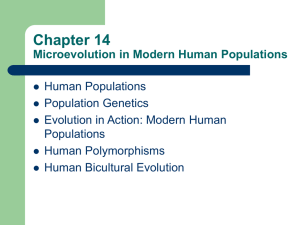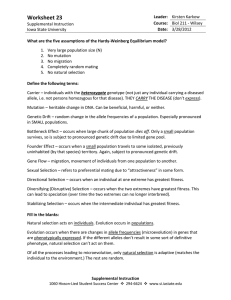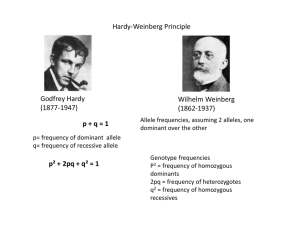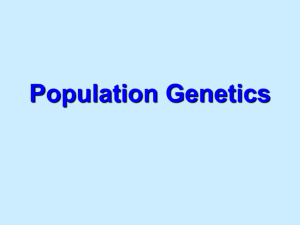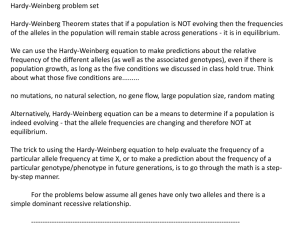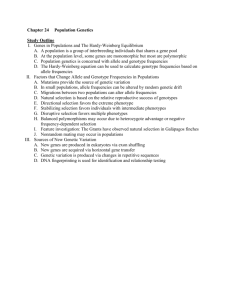AP Biology Chapter 21 Assignment
advertisement
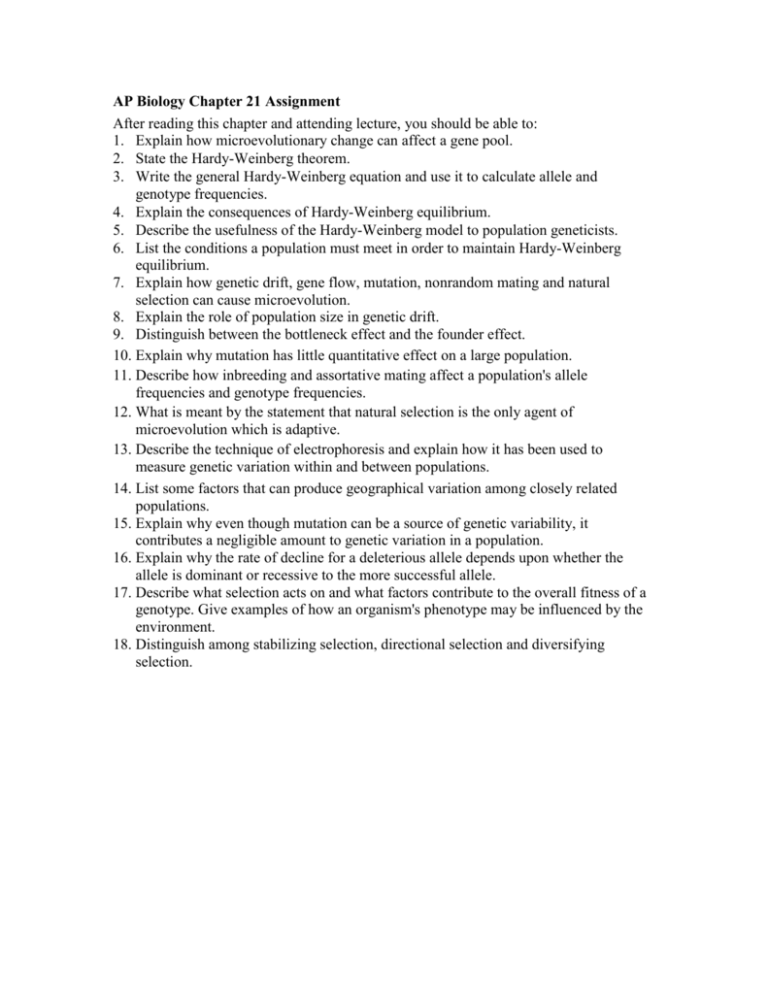
AP Biology Chapter 21 Assignment After reading this chapter and attending lecture, you should be able to: 1. Explain how microevolutionary change can affect a gene pool. 2. State the Hardy-Weinberg theorem. 3. Write the general Hardy-Weinberg equation and use it to calculate allele and genotype frequencies. 4. Explain the consequences of Hardy-Weinberg equilibrium. 5. Describe the usefulness of the Hardy-Weinberg model to population geneticists. 6. List the conditions a population must meet in order to maintain Hardy-Weinberg equilibrium. 7. Explain how genetic drift, gene flow, mutation, nonrandom mating and natural selection can cause microevolution. 8. Explain the role of population size in genetic drift. 9. Distinguish between the bottleneck effect and the founder effect. 10. Explain why mutation has little quantitative effect on a large population. 11. Describe how inbreeding and assortative mating affect a population's allele frequencies and genotype frequencies. 12. What is meant by the statement that natural selection is the only agent of microevolution which is adaptive. 13. Describe the technique of electrophoresis and explain how it has been used to measure genetic variation within and between populations. 14. List some factors that can produce geographical variation among closely related populations. 15. Explain why even though mutation can be a source of genetic variability, it contributes a negligible amount to genetic variation in a population. 16. Explain why the rate of decline for a deleterious allele depends upon whether the allele is dominant or recessive to the more successful allele. 17. Describe what selection acts on and what factors contribute to the overall fitness of a genotype. Give examples of how an organism's phenotype may be influenced by the environment. 18. Distinguish among stabilizing selection, directional selection and diversifying selection.



